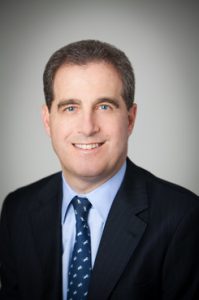Weil Gotshal Shortens Path to Partnership in Bid to Retain Associates
By trimming two years off of its partner track, Weil is betting that fewer fourth- and fifth-year associates will jump to a competitor or an in-house job.
May 30, 2018 at 01:00 PM
8 minute read
The original version of this story was published on New York Law Journal
 Credit: Still Life Photography/Shutterstock.com
Credit: Still Life Photography/Shutterstock.com
Seeking to stem the exits of talented senior associates, New York-based Weil, Gotshal & Manges next year plans to shorten the length of its partner track, allowing associates to obtain a coveted partnership position after seven-and-a-half years.
Weil is cutting back its partner path by two years across all its offices, bucking the trend of a lengthening journey to partnership in Big Law. The firm is betting that the move will prompt more fourth- and fifth-year associates to stay at Weil, rather than jump to a competitor or an in-house career.
“The current generation of lawyers doesn't want to wait nine or nine-and-a-half years” for a promotion decision, said executive partner Barry Wolf.
 Barry Wolf
Barry WolfAt the same time, Wolf is quick to rebut what may be on the minds of skeptics who see this as an “up or out” system—which he insists it is not. “It's not designed to weed people out,” he said.
The firm informed associates about the changes Wednesday morning.
Currently Weil associates can be elevated to partner or counsel after nine-and-a-half years. And once an attorney becomes counsel, he or she could remain there for an unlimited period of time.
Under the new system, associates will be promoted to partner or counsel after seven-and-a-half years. “We expect substantially all of our associates who are here at seven-and-a-half years will be promoted to one or the other,” Wolf said. After a phase-in period of the new system, the firm will no longer have any eighth- or nine-year associates, except under unique lateral situations.
While the firm hasn't yet set the new partners' compensation scale, Wolf said he expects it to be at least $100,000 more than what attorneys were making as an eighth-year associate. A typical eighth-year associate in a large New York firm, with year-end bonuses, makes $400,000 or $425,000, he noted.
As before, associates promoted to partnership will first join the firm's nonequity ranks, a group that doesn't share in the firm's profits. Weil refers to this group as fixed-income partners.
Others, after seven-and-a-half years, will be promoted to one of two categories of counsel. One will be a niche counsel category in which an attorney can remain for the rest of his or her career, reserved for specialty practices, Wolf said.
Other non-niche counsel will have a three-year term, and will be eligible to become partner after one, two or three years. If the counsel attorney doesn't become partner at the end of the three-year period, Weil will transition them out of the firm, offering outplacement services, Wolf said.
Even in the counsel ranks, the attorneys will make more than what they would have made as an eighth- and ninth-year associate, Wolf said. Weil will offer counsel in their second and third years a “stay bonus—the firm is considering $50,000—to motivate them to remain.
“If they don't become partner, they will have a title and more money to then go out and look for a job,” he said about those who don't stay on at Weil.
As part of the change, the firm will tell associates at the end of their fifth year about their prospects for advancement. While Wolf acknowledges that some associates may leave at this point, he said that if they are already at their fifth year at Weil, most of them will be encouraged to stay at the firm through their seventh year.
The new career track will be implemented firmwide at the end of 2019, effective for Jan. 1, 2020, promotions. Next year, the firm will consider promoting associates who are in the seventh, eighth and ninth year.
After the initial ramp-up period, the firm expects to promote the same number of associates each year to partner as it does now, while counsel promotions will likely increase, Wolf said. (Last year, the firm elevated 10 attorneys to partner and nine to counsel.)
Heading Off Headhunters
Weil, like the rest of the industry, has lengthened its partner track over the last couple of decades, including in 2010, when it became nine-and-a-half years.
At the same time, law firms are struggling to fill in the ranks of midlevel and senior associates. While the associate attrition rate dropped slightly in 2016 to 16 percent, one industry report found that 81 percent of entry-level associates leave law firms within five years. The report pegs annual attrition costs for a 400-attorney firm to be $25 million, due to turnover, recruiting and replacement expenses.
Wolf said Weil's attrition rate is similar to others firms in New York. After four or five years, headhunters “prey upon the uncertainty” in an associate's future and the length of time to make partner, Wolf said, with associates often asked, “do you really want to spend the next five years doing this” without a promise of success.
Wolf said Weil's new approach was heavily vetted within the firm, after the management committee formed a partner team in July 2017 to study how to improve associate retention and gathered input from associates. Firm partners unanimously approved the system on May 24.
Even though the firm may be paying more attorneys a higher salary, “we don't expect this to be a cost because we expect to retain significantly more senior-level associates, which will clearly improve leverage, increase revenue, decrease the cost of hiring laterally,” Wolf said.
At the same time, he said he hopes and expects the new approach will help retention and advancement for all associates, including diverse associates, while the firm will continue sponsoring, mentoring and other programs.
Not 'Up or Out'?
Wolf said he doesn't see the fifth or seventh years as a new threshold for the firm to push some associates out sooner, and there is no change in the criterion and standards for associates to make partner. Just as before, the amount of time that new partners stay in the fixed-income ranks will vary by their performance, Wolf said.
“We believe this is in the long-term best interests of our law firm,” he said, noting the firm is making the change from a position of strength after record revenue and profit growth last year.
He acknowledged there would likely be skepticism in some corners. “People may initially think that all of a sudden, we're going to the Chicago model,” he said, not naming any particular firms but pointing to firms with “up or out” systems.
Firms known to employ “up or out” systems include Kirkland & Ellis and other Midwestern-founded firms, said David Barnard, a consultant to Am Law 100 firms as a founding partner of Blaqwell. In such systems, attorneys make nonequity partner after about seven years. and then, if they prove their business-generating potential within three to five years, they are promoted to equity partners, he said. If they don't, they are out of the firm.
But countering concerns of Weil becoming an up or out system for partners, Wolf stressed that under the existing and the new system, “We expect everyone that we make partner will retire as a partner.”
It's possible some attorneys may also worry about a shorter tenure as a result of the change. “Lawyers are trained to find problems with anything,” Wolf said. “Will someone say, 'Oh my god, instead of having nine-and-a-half years of assured employment, we only have seven-and-a-half years'?”
“That is something we have to drive home and make clear that's not what's intended here,” Wolf said, adding he anticipates most associates at the fifth year will be encouraged to stay, and most at the seventh year will be told they will have the partner or counsel title.
Blaqwell's Barnard is one of the skeptics. He questioned whether Weil couldn't already retain their most talented associates—“they would find a way to retain [a superstar associate],” he said—and he has doubts whether the approach will actually improve overall associate retention.
Still, he said, the new system is “great for those people who become partner after seven years,” and it will help Weil continue to keep its superstar associates.
This content has been archived. It is available through our partners, LexisNexis® and Bloomberg Law.
To view this content, please continue to their sites.
Not a Lexis Subscriber?
Subscribe Now
Not a Bloomberg Law Subscriber?
Subscribe Now
NOT FOR REPRINT
© 2025 ALM Global, LLC, All Rights Reserved. Request academic re-use from www.copyright.com. All other uses, submit a request to [email protected]. For more information visit Asset & Logo Licensing.
You Might Like
View All
Are Counsel Ranks Getting 'Squeezed' as Nonequity and Associate Pay Grows?
5 minute read


Trending Stories
- 1Reviewing Judge Merchan's Unconditional Discharge
- 2With New Civil Jury Selection Rule, Litigants Should Carefully Weigh Waiver Risks
- 3Young Lawyers Become Old(er) Lawyers
- 4Caught In the In Between: A Legal Roadmap for the Sandwich Generation
- 5Top 10 Developments, Lessons, and Reminders of 2024
Who Got The Work
J. Brugh Lower of Gibbons has entered an appearance for industrial equipment supplier Devco Corporation in a pending trademark infringement lawsuit. The suit, accusing the defendant of selling knock-off Graco products, was filed Dec. 18 in New Jersey District Court by Rivkin Radler on behalf of Graco Inc. and Graco Minnesota. The case, assigned to U.S. District Judge Zahid N. Quraishi, is 3:24-cv-11294, Graco Inc. et al v. Devco Corporation.
Who Got The Work
Rebecca Maller-Stein and Kent A. Yalowitz of Arnold & Porter Kaye Scholer have entered their appearances for Hanaco Venture Capital and its executives, Lior Prosor and David Frankel, in a pending securities lawsuit. The action, filed on Dec. 24 in New York Southern District Court by Zell, Aron & Co. on behalf of Goldeneye Advisors, accuses the defendants of negligently and fraudulently managing the plaintiff's $1 million investment. The case, assigned to U.S. District Judge Vernon S. Broderick, is 1:24-cv-09918, Goldeneye Advisors, LLC v. Hanaco Venture Capital, Ltd. et al.
Who Got The Work
Attorneys from A&O Shearman has stepped in as defense counsel for Toronto-Dominion Bank and other defendants in a pending securities class action. The suit, filed Dec. 11 in New York Southern District Court by Bleichmar Fonti & Auld, accuses the defendants of concealing the bank's 'pervasive' deficiencies in regards to its compliance with the Bank Secrecy Act and the quality of its anti-money laundering controls. The case, assigned to U.S. District Judge Arun Subramanian, is 1:24-cv-09445, Gonzalez v. The Toronto-Dominion Bank et al.
Who Got The Work
Crown Castle International, a Pennsylvania company providing shared communications infrastructure, has turned to Luke D. Wolf of Gordon Rees Scully Mansukhani to fend off a pending breach-of-contract lawsuit. The court action, filed Nov. 25 in Michigan Eastern District Court by Hooper Hathaway PC on behalf of The Town Residences LLC, accuses Crown Castle of failing to transfer approximately $30,000 in utility payments from T-Mobile in breach of a roof-top lease and assignment agreement. The case, assigned to U.S. District Judge Susan K. Declercq, is 2:24-cv-13131, The Town Residences LLC v. T-Mobile US, Inc. et al.
Who Got The Work
Wilfred P. Coronato and Daniel M. Schwartz of McCarter & English have stepped in as defense counsel to Electrolux Home Products Inc. in a pending product liability lawsuit. The court action, filed Nov. 26 in New York Eastern District Court by Poulos Lopiccolo PC and Nagel Rice LLP on behalf of David Stern, alleges that the defendant's refrigerators’ drawers and shelving repeatedly break and fall apart within months after purchase. The case, assigned to U.S. District Judge Joan M. Azrack, is 2:24-cv-08204, Stern v. Electrolux Home Products, Inc.
Featured Firms
Law Offices of Gary Martin Hays & Associates, P.C.
(470) 294-1674
Law Offices of Mark E. Salomone
(857) 444-6468
Smith & Hassler
(713) 739-1250









